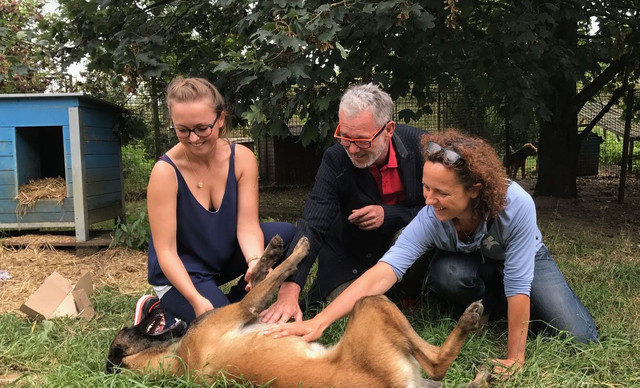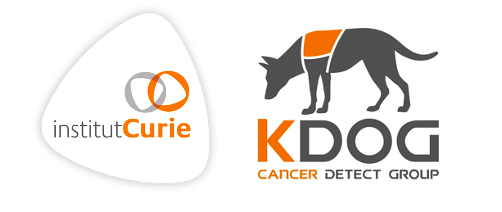Our dogs

Dogs’ contribution to the project
Thanks to crowdfunding, two 18-months Belgian Shepherds, Thor and Nykios, were bought for the research during April 2016. Belgian Shepherds are particularly fit for this work due to their high learning and concentration skills, their stamina and playful nature. Other pedigrees are a priori also able to pursue cancer detection. Recently, a young Springer has also joined KDOG and is actually trained following the same protocol, to test this assumption.
Every dog is to be trained between its 14 and 18 months and can work on average until its 9 years old. Training lasts between 3 to 6 months, from acquisition of primary olfaction memorization up to the detection of infected cells at a very low threshold. The goal of this training is to enable dogs to detect cancer by progressively lowering the perception threshold and consequently, to make them identify the odor even in tiny quantities of matter. Dogs are trained by high level dog-experts and followed regularly by veterinarians and ethologists.
The training of detecting dogs
In August 2016, 130 women participated to the first phase of the study by providing « sane » and « cancer » samples. These samples were sent to a lab in Magnac-Laval (Haute-Vienne, France) where Thor and Nykios started their formation.
A two-steps work:
1. Firstly, the dog expert proceeds to the recognition of the odor, teaching the animals what they should be searching for, and then to the « deep » memorization of it. After they have memorized it, dogs are put in the situation of research. During exercises, one “cancer” sample was put amidst three other “sane”. The dog should identify and signal the “cancer” one.
2. Secondly, dogs should directly recognize the « cancer » sample among the others without having memorized it before.
An evolving training:
Training has continued with different exercises: dogs can now search for the sample without being kept on a leash. The 4-samples lines were also modified and the dog is now learning to randomly analyze a line with more than one “cancer” samples or on the contrary, a line completely constituted of “sane” samples. Each dog was also not exclusively linked to the same dog-handler to ensure their proficient acquisition of skills, notwithstanding the person leading them.
Some data:
· 60 samples were analyzed every day by the dogs.
· Between each exercise, the dog rests for 1h30 to 2 hours.
· The diagnosis by the animal (identification of cancer sample) takes 15 to 30 seconds.
